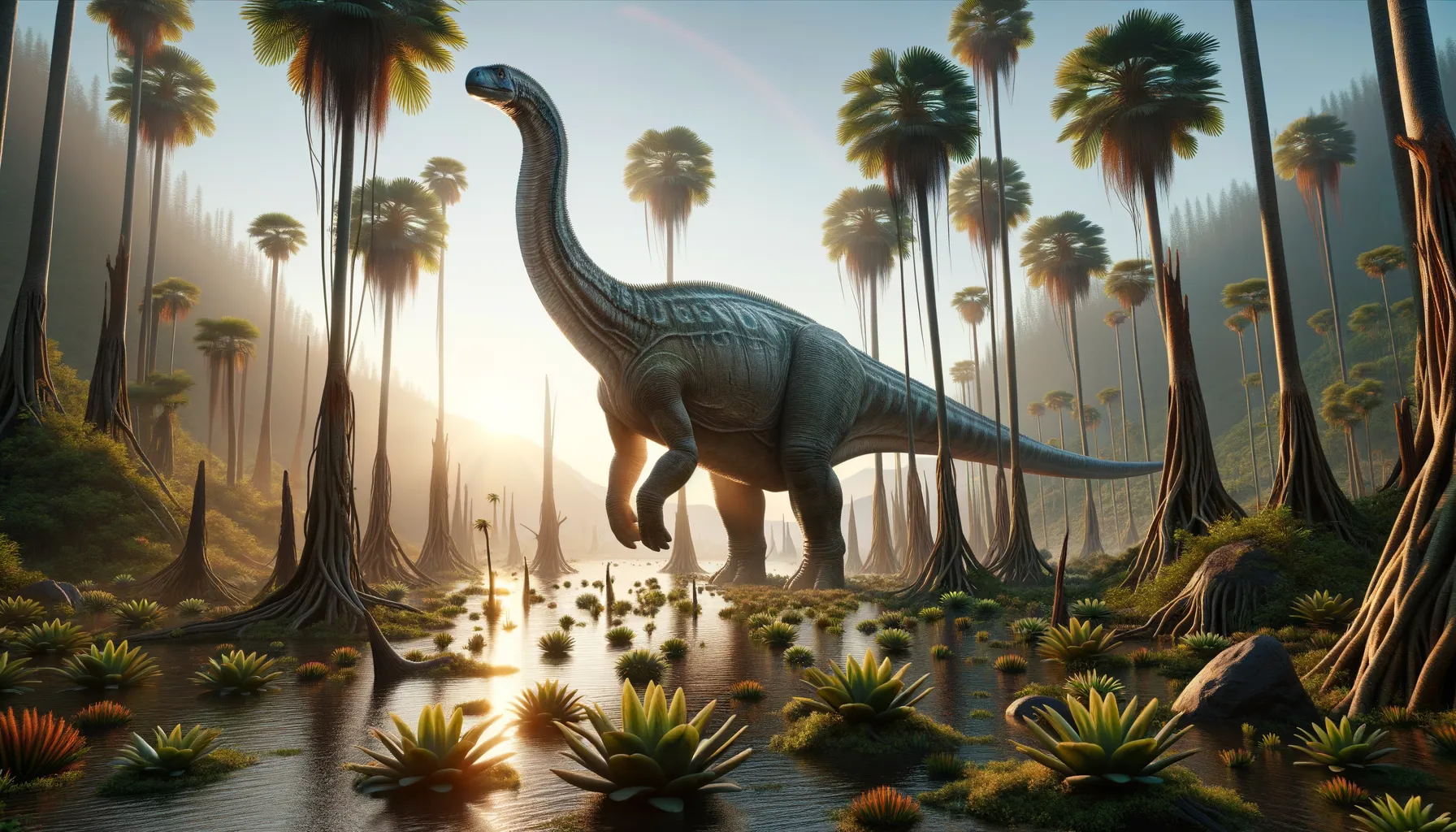
Uberabatitan
Titan of ancient Brazilian lands!
Period
Cretaceous
Length
Approximately 25-30 meters in length.
Height
Estimated to be around 12 meters tall.
Weight
Approximately 50-70 tons.
Uberabatitan was a giant titanosaur sauropod dinosaur that roamed the Earth during the Late Cretaceous period. It was characterized by its enormous size, long neck, and whip-like tail, allowing it to forage high in the trees for vegetation. Its fossils were first discovered in Brazil, making it a significant find in South American paleontology. Like many sauropods, Uberabatitan lived a herbivorous lifestyle, consuming vast amounts of plant material to sustain its massive body.
Diet
Uberabatitan was a herbivore, feeding primarily on coniferous trees, ferns, and cycads. Its long neck allowed it to reach high vegetation, making it an efficient feeder in its environment.
Hunting
Being a herbivore, Uberabatitan did not hunt but foraged for plant materials. Its primary focus was on finding large quantities of food to support its immense body size.
Environmental challenges
Uberabatitan faced several environmental challenges, including fluctuating climates and competition for resources from other large herbivores. Predators such as large theropods also posed a threat, particularly to juveniles. Frequent forest fires during the Cretaceous period might have affected its preferred habitats and food sources.
Speed
Slow-moving, due to its massive size.
Lifespan
Estimated to live around 70 to 80 years.
First discovery
Discovered in Brazil in the early 2000s.
Fun Facts
- Uberabatitan was a massive sauropod dinosaur that lived during the Late Cretaceous period in what is now Brazil.
- The name 'Uberabatitan' comes from the Uberaba region where its fossils were found, combined with 'titan' which reflects its gigantic size.
- It is estimated that Uberabatitan could have been around 50 feet (15 meters) long, making it a formidable herbivore of its time.
- This dinosaur had a long neck, like other sauropods, which allowed it to reach high vegetation.
- Uberabatitan was one of the last sauropods to roam South America before the mass extinction event at the end of the Cretaceous.
- Despite its size, Uberabatitan, like many sauropods, likely moved in herds for protection against predators.
- Fossils of Uberabatitan provide valuable insights into the diversity of sauropods in ancient South America.
Growth and Development
As a sauropod, Uberabatitan likely experienced rapid growth rates in its early life stages. It required vast amounts of plant material to fuel this growth, leading to early independence in search of food. Fossil evidence suggests that growth was sustained until sexual maturity, after which it stabilized.
Habitat
Uberabatitan lived in lush, forested environments, with access to abundant plant life. Its surroundings included rivers and floodplains, which provided essential resources like water and soft vegetation. This habitat supported a diverse ecosystem, including other dinosaur species and prehistoric flora.
Interaction with other species
Uberabatitan coexisted with various other dinosaur species, both herbivorous and carnivorous. It likely engaged in minimal direct interaction, although its massive presence influenced the ecosystem's structure. Competition with other plant-eating dinosaurs was common, especially during scarce resource periods.
Natural lifespan
Uberabatitan's lifespan extended up to 80 years, given adequate food and environmental stability.
Reproduction
Uberabatitan likely laid large eggs in carefully selected nesting sites, similar to other sauropods. These nests were possibly communal, providing increased protection against predators. Hatchlings were relatively independent, growing rapidly to survive the challenges of their environment.
Social behaviour
While not definitive, it's hypothesized that Uberabatitan could have moved in herds for protection. This social structure would have aided in resource location and predator deterrence. However, adults might have led a more solitary existence, given limited food availability.
Fossil locations
Fossil remains of Uberabatitan have been predominantly found in the São Paulo state of Brazil. This region has provided crucial insights into the diversity of South American titanosaurs. Ongoing excavations continue to reveal more about its distribution and ecological role during the Cretaceous period.
